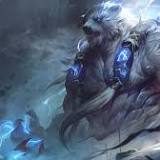The Dinosaurs, Ranked


Scaly, feathered, toothed, or beaked—long-necked, spike-tailed, tiny, or gargantuan—dinosaurs are a wildly diverse group. But certain dinos stand above the rest, both literally and on the plinth of our imagination. Here’s my definitive ranking of the best dinosaurs; I’ll be mightily impressed if you’ve heard of every creature on this list.

Let’s get this predator out of the way immediately. Tarbosaurs were a genus of tyrannosaurids that thrived in Asia during the Cretaceous Period. One particular species—Tarbosaurus bataar—made headlines 10 years ago when a U.S. Federal Court found that a 24-foot-long specimen was smuggled into the United States from Mongolia. On the whole, tarbosaurs were quite cool and fearsome. Sure, it’s basically T. rex Lite, but that’s enough to squeak onto my list.

This is the type of dinosaur that doesn’t often make it into children’s books—and that’s not just because the animal’s preserved “butthole” was recently found in China. To the untrained eye, Psittacosaurus looks like an average herbivorous dinosaur, which isn’t great fodder for non-expert illustrations.
But fossils of the animal (whose name means “parrot-resembling lizard”) reveal a substantial amount about dinosaur ecology and anatomy. Researchers studying the Liaoning fossil found that the animals were countershaded, a type of coloration that many animals employ today. And that’s even before you get to its preserved cloaca, the soft-tissue multipurpose opening the animal used for defecation, urination, and laying eggs.
No preserved dinosaur penis has ever been found. But the psittacosaurus deserves some recognition for getting as close as we’ve come to one.

This wouldn’t be an honest dinosaur ranking if it didn’t include at least one duck-billed dinosaur (a hadrosaur), which went extinct along with nearly all other dinosaurs 66 million years ago. Parasaurolophus is recognizable for its pronounced head crest. The head crests were hollow, and paleontological consensus is that they likely were used for making noise, as well as being visual ornaments. I like parasaurolophus because it looks like a dinosaur that had sinus issues, something I relate to deeply.

As far as small-but-scary predators go, the petite theropod Deinonychus is one to look out for. In all likelihood a feathered dinosaur like Archaeopteryx, Deinonychus had formidable 5-inch talons on its feet, which it would have used to grab prey. The animal probably weighed about 150 pounds, according to Britannica, but that didn’t stop this raptor from being absolutely terrifying. I’ve included it here as a great example of a small predator being just as scary as the big ones, which tend to get more fanfare.

It’s difficult to say whether Argentinosaurus or Patagotitan was the largest-known land animal of all time, but the titanosaurs definitely deserve a place on this list. The massive herbivorous sauropods lived until the Late Cretaceous, and the largest individuals may have weighed over 100 tons (elephants typically weigh around 6 tons).
Any list that overlooks the largest animals—with necks so long that the tallest individuals would be able to peer into windows seven stories up—is falling short. You can’t help but wonder how many Deinonychus it would take to bring down one massive sauropod.

Tyrannosaurs aren’t that great. There, I said it. Yes, animals like T. rex were huge and ferocious, but there’s a silly amount of clamor about the billions of these reptiles that roamed Earth.
Part of the issue is that tyrannosaurs (and theropods in general) tend to control public attention; it’s a predator-driven consumer market. Tyrannosaurs dominated their environments like tyrants, indeed, but their silly little arms and lack of any armored plates puts them down the pecking order for me.

Before humankind invented the hard hat, dinosaurs invented very, very, very hard hats. That’s right—Pachycephalosaurus (pack-ee-keffa-lo-saurus) was a dinosaur with the defining characteristic of a skullcap that could double as a battering ram.
According to the American Museum of Natural History, that ram probably wasn’t used in head-to-head combat, though, as the bony dome was too weak for those impacts. Rather, males may have hit opponents on their sides when fighting over females.
Long considered a strictly herbivorous dinosaur, a recent study of Pachycephalosaurus teeth indicated that the animals may have eaten meat, too. These dinosaurs had the most dragon-like skulls, in my opinion, so they’ve well earned their place on this list.

According to Britannica, when the first Triceratops was found in 1887, it was thought to be a giant, extinct species of bison. You can’t fault the misconception too much: squint, and it makes sense. The prominent horns provided defense against predators—some Triceratops have been found with bite marks that match the maws of tyrannosaurs—but they were also used to fight each other, as Gizmodo recently reported. Simply put, the hornier the dinosaur, the better. So the three-horned Triceratops is one of the best.

I love Archaeopteryx because it blew the fossil record of dinosaurs wide open. With its discovery in 1861—just two years after the publication of Darwin’s On the Origin of Species—paleontologists could begin to connect the evolutionary dots between purely landlubbing dinosaurs and their flying relatives, birds.
Archaeopteryx could fly, but exactly how remains uncertain. Regardless, its importance in our understanding of dinosaurs and their evolution gives Archaeopteryx its rightful place in the top five best dinosaurs—even if the feathers of the animal are still controversial.

The highest-ranking carnivore on this list, spinosaurs have been having a research renaissance lately. Recently published research on the animal’s tail and bone structure indicates that the meat-eater was a proficient swimmer and that at least some species hunted prey while completely submerged.
Like other dinos on this list, spinosaurus’ sail may have been used for display or for thermoregulation. What is clear is that the look is fantastic; as glad as I am that these things are no longer around, they definitely deserve their place near the final podium.

Few armored dinosaurs loom quite as large as the ankylosaurs and nodosaurs, animals known for their intense dorsal plating. They’re absolutely badass, and among those animals Borealopelta markmitchelli is the standout. The type specimen of this species is a ridiculously well-preserved individual from what is now Alberta, Canada, an individual whose last meal was a combination of moss, ferns, and flowering plants.
Ankylosaurs in general have hardcore anatomies. A recently named species, Spicomellus afer, had spikes that sprouted directly out of its ribcage. It would’ve made a tricky meal for any predator. My hat is off to the ankylosaurs, who made defense look way cooler than offense.

Since birds are the only dinosaurs still alive, I could make the case for ranking them No. 1 on this list. But they’re second place, and what better bird to enshrine in the pantheon of great dinosaurs than Gallus domesticus, the not-so-humble chicken? Statista estimates that there were nearly 26 billion chickens worldwide in 2021. Talk about coming home to roost—when other dinosaur species faltered, chickens stayed the course. And now, for many, they’re a main course.

A dinosaur with giant kite-shaped plates protruding from its back is the best kind. And stegosaurs didn’t stop there: They also had huge spikes sticking out of their tail.
The use of stegosaur plates is still unknown. As the Natural History Museum in London states, they could have deterred predators, been a species identifier, regulated body temperature—or perhaps some combination of these. Whatever the plates’ use, this is what peak performance looks like. The stegosaur is a classic dinosaur—it’s from the Jurassic, meaning it went extinct nearly 100 million years before T. rex and Triceratops. Stegosaurus is spiky, big, and confusing in all the best ways. Number 1 all day long.


 United Kingdom
United Kingdom Argentina
Argentina  Australia
Australia  Austria
Austria  Brazil
Brazil  Canada
Canada  Germany
Germany  Ireland
Ireland  Italy
Italy  Malaysia
Malaysia  Mexico
Mexico  New Zealand
New Zealand  Poland
Poland  South Africa
South Africa  United States
United States 





















